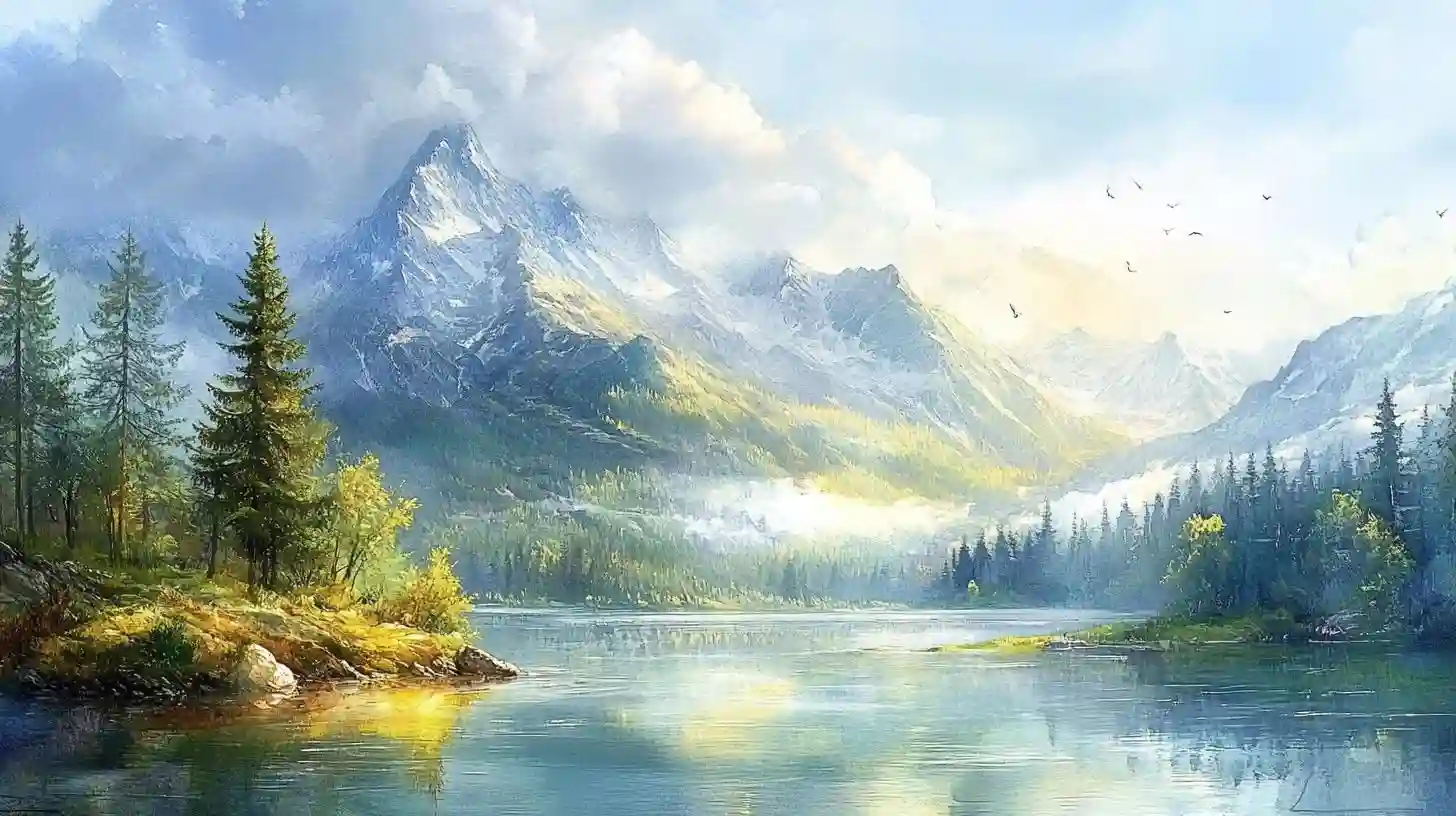
Watercolor painting is a delightful and accessible medium that allows artists to capture the beauty of landscapes with fluidity and vibrant color. The unique properties of watercolor make it ideal for portraying soft edges, gentle transitions, and the ethereal quality of light, which are essential when creating landscape art. To craft stunning landscapes with watercolor, one must understand the fundamental techniques, tools, and approaches suitable for this enchanting medium.
One of the primary tools in any watercolor artist's kit is the brush. Watercolor brushes come in various shapes and sizes, each serving a unique purpose. Round brushes are versatile, capable of producing both fine lines and broad washes. Flat brushes are excellent for creating sharp edges and filling larger areas, while fan brushes can add texture and interesting details, such as foliage or clouds. Choosing the right brush is crucial not only for the desired outcome but also for how one feels while painting. Experimenting with different types can lead to delightful surprises and new techniques.
Before diving into painting, it is essential to prepare the workspace and materials. A good, absorbent watercolor paper will help achieve the desired effects, as it holds water well and allows for various techniques to be employed. Consider the weight and texture of the paper, as these characteristics will influence the final appearance of your work. Starting with clean water and a palette of quality watercolor paints is also key. Unlike other mediums, watercolor requires a balance of water and pigment, and using a good brand will ensure vibrant and transparent results.
A crucial technique to master in watercolor painting is the wash. A wash is a layer of diluted paint applied to the paper, creating an even background that can serve as a foundation for the landscape. There are different types of washes, such as flat washes, graded washes, and variegated washes. Flat washes provide a consistent hue across the application, while graded washes transition smoothly from one color to another. Variegated washes mix multiple colors in one application, creating visual interest. Practicing these techniques will enhance one’s ability to build layers and depth in the landscape.
Layering is another essential technique in watercolor. Unlike opaque mediums, watercolor is transparent, allowing artists to build depth through layers of color. It is essential to allow each layer to dry before applying the next, ensuring the colors remain vibrant and do not muddy. Using glazing techniques, artists can apply thin layers of color over dried layers to enhance shadows, create depth, or subtly shift hues. This method can significantly enrich the landscape, adding nuances and complexity.
Light plays a critical role in landscape painting. Observing how light interacts with the environment, from the way it casts shadows to how it illuminates objects, allows artists to convey mood and atmosphere effectively. When painting a landscape, consider where your light source is coming from and how it affects various elements within the scene. Working from light to dark is a common approach in watercolor, preserving the lightest areas of the composition by either leaving them untouched or applying very pale washes.
To depict natural elements such as trees, water, mountains, and skies convincingly, artists can employ various techniques. Wet-on-wet is a technique that involves applying wet paint onto wet paper or wet paint, resulting in soft edges and beautiful blends. This technique is particularly effective for painting skies or distant mountains. Conversely, wet-on-dry involves applying wet paint onto dry paper, allowing for more control and precision. This technique is ideal for detailing and rendering distinct shapes such as tree branches or building outlines.
Texture is another vital aspect of landscape painting that can be achieved through unique techniques. The use of salt can create a fascinating texture as it absorbs moisture from the paint, leaving behind unique patterns. Scraping techniques, where dried paint is scraped off, can also reveal interesting textures. Sponges and crumpled paper towels can be used to create foliage and clouds, while flicking the brush can simulate the effect of grass or distant trees. These experimental textures can elevate a painting, making it visually engaging.
Lastly, adding finishing touches can transform a landscape painting. After allowing the painting to dry completely, consider accentuating certain areas for additional contrast or detail. Fine lines can be added for roots of trees or grassy patches. Using a white gel pen or white gouache can add highlights and enhance the luminosity of certain areas, particularly on water surfaces or edges of clouds.
Mastering the art of watercolor landscapes requires patience, practice, and exploration. The beauty of watercolor lies in its unpredictability and the joyful surprises it brings. Embrace the fluidity of the medium, the vibrant colors, and the ability to capture light and atmosphere. With dedication, one can unlock the potential to paint stunning landscapes that resonate with the enchanting essence of nature. By applying these techniques thoughtfully and allowing one’s creativity to flow, anyone can create captivating watercolor landscapes that speak to the soul.